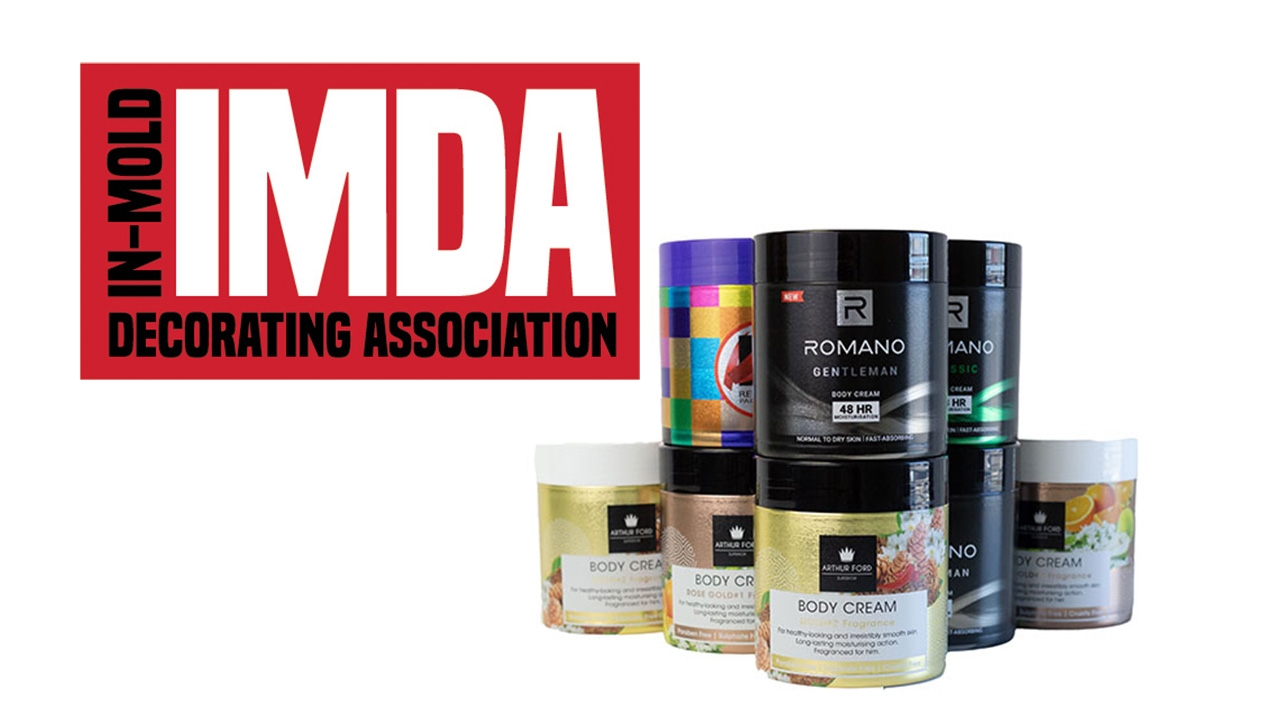IMDA releases white paper on in-mold labels recyclability
The association publishes a detailed study of the recyclability advantages of in-mould labeling.

In-Mold Decorating Association (IMDA) has released a white paper that asserts in-mold technologies used for the labeling and decoration of plastic products are a sustainable, recyclable alternative to other types of labels or decoration.
According to the association, the proliferation of single-use plastic containers and plastic waste, concerns about climate change and the rising interest in a circular economy are prompting consumers and regulators to look for ways to reduce the environmental impact of plastic packaging and products.
The new white paper describes how in-mold technologies for labeling and decorating yield recyclable and sustainable plastic packaging for a variety of markets and applications.
Topics include an overview of in-mold labeling advantages in recycling; a discussion of in-mold technology’s sustainability factors in production environments; design guidance for recyclability and a case study featuring a packaging application.
The substrate used for in-mold labeling (IML) and in-mold decorating (IMD) processes becomes an integrated part of the finished package, simplifying the automated sorting and washing that occur at the recycling facility by eliminating the need for chemical removal of a paper or film label and adhesive.
Instead, the in-mold label or decorative film is formed from the same or similar resin type as the finished packaging, part or product, so there is no contamination of the recyclate with a different resin or adhesive.
As a result, the in-mold-labeled or in-mold-decorated item proceeds through the recycling process to be reground into pellets that are suitable for use in future plastic manufacturing applications. Instead of being removed, the label blends with the recycled polymer. The in-mold process also eliminates adhesive, which can affect the color and mechanical properties of the recyclate.
As noted in the white paper, claims about the recyclability of in-mold labeled and in-mold decorated packaging are supported by third-party recommendations, designations, testing and certification.
The Association of Plastic Recyclers (APR) has designated IML as a ‘Preferred’ labeling method for polypropylene (PP) and high-density polyethylene (HDPE) when labels of a compatible polymer are used because the label is bonded with the wall of the package/part.
The World Packaging Organization recommends the use of mono-materials in packaging applications and, in its design guidance, gives labeling processes such as IML a green ‘best case’ ranking in its traffic-light rating system.
The Flexographic Technical Association notes that in-mold technologies increase efficiency and reduce waste by making it possible for flexographic printers to work with recessed panels, inclines, asymmetrical features and applications like hot foil and fluorescent and metallic inks.
RecyClass’s Design for Recycling Guidelines has designated IML for both PP containers and HDPE containers and tubes as ‘fully compatible with colored PP recycling when the amount of ink is below 1 percent of the total weight of the full packaging’.
The white paper also discusses the reusability and brand permanence of products decorated with in-mold labeling technologies, and points to the sustainable production processes of IML as an example of sustainable manufacturing.
IMDA members and packaging brand owners can receive the white paper at no cost. Others interested in receiving the white paper can email dianna@imdassociation.com.
Stay up to date
Subscribe to the free Label News newsletter and receive the latest content every week. We'll never share your email address.

